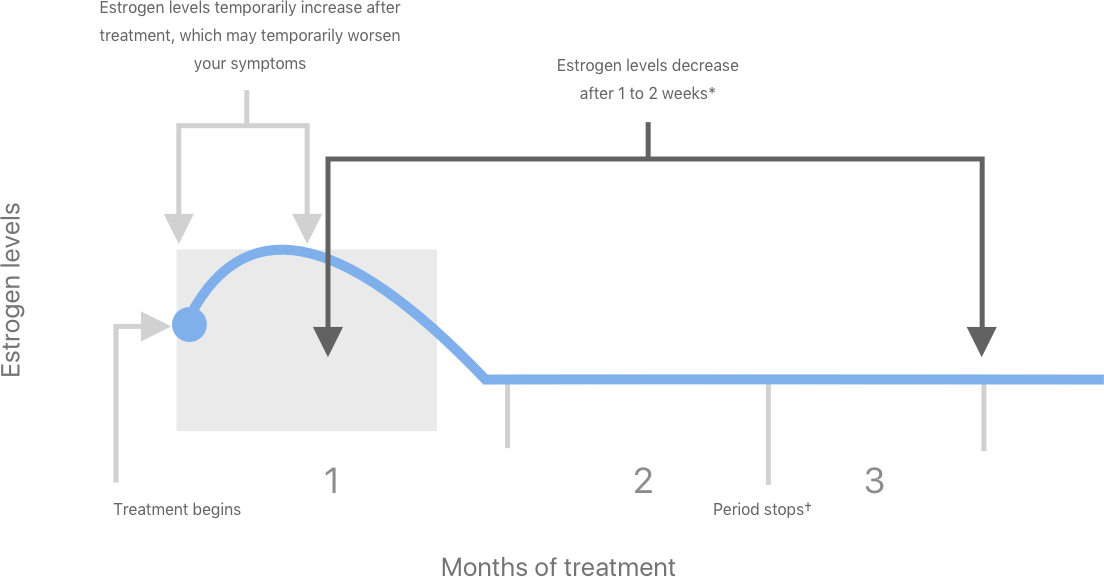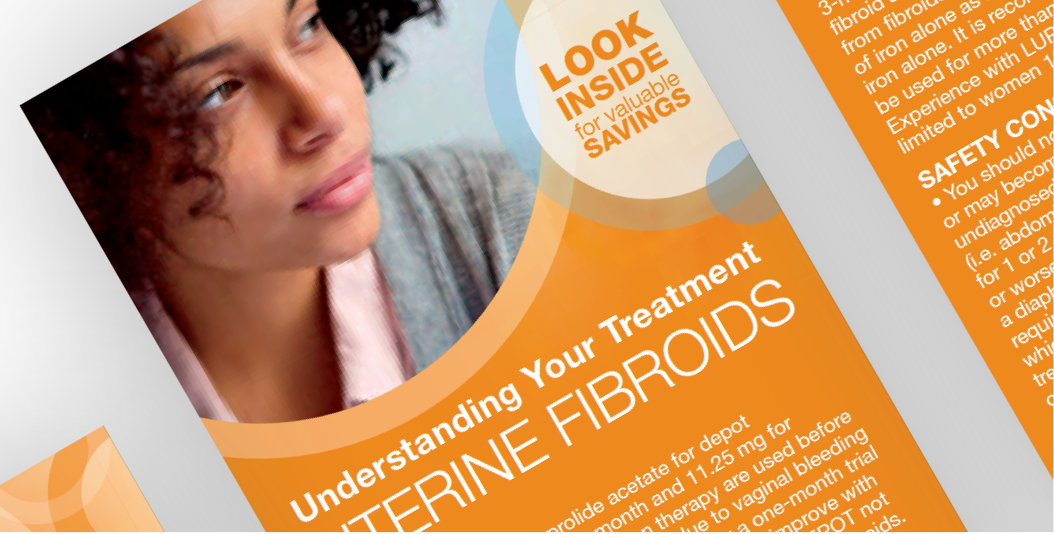Understanding Anemia Associated With Uterine Fibroids Prior to Fibroid Surgery
Learn more about uterine fibroids, their common symptoms, and how the anemia related to uterine fibroids can be treated prior to fibroid surgery.
LUPRON DEPOT is used with iron therapy before fibroid surgery to improve anemia related to uterine fibroids.1
If you have uterine fibroids, you are not alone…
An estimated 1 in 4 women with uterine fibroids suffers from symptoms that affect daily life.2*

The good news is that fibroids can be treated.3 This website can help you learn more about fibroids and anemia, the symptoms they can cause, and treatment considerations to discuss with your doctor before fibroid surgery.
*According to a national survey of 968 women
aged 29 to 59 years.2
What are fibroids?
Uterine fibroids are growths (or tumors) that develop in the muscular wall of the uterus.3
They may also be called myomas or leiomyomas uteri. Fibroids are generally benign—that is, they are not cancerous (malignant). Fibroids are the most common kind of growths of the uterus. A woman may have just one fibroid or several.3,4
They may remain very small for a long time, then grow suddenly and rapidly—or they may grow slowly over a number of years.3
Uterine fibroids can range in size from microscopic to the size of a grapefruit or even larger.4,5
Types of fibroids6
Uterine fibroids can appear on different locations on the uterus:
- Inside the uterus wall (intramural)
- On the inner surface (submucosal)
- On the outer surface (subserosal)
- Attached to the inside of the uterus by a stem-like structure (pedunculated submucosal)
- Attached to the outside of the uterus by a stem-like structure (pedunculated subserosal)
Causes of fibroids and who is at risk
It is not clear what causes fibroids, but evidence suggests that their growth is related to estrogen and progesterone.4,5 Fibroids are most common in women aged 30-40 years, but they can occur at any age.3
Fibroids occur about 3 times more often in African American women.2
If you’ve been diagnosed with fibroids, talk to your doctor about treatment options that may be right for you.
Some possible symptoms associated with fibroids3
The location and size of fibroids can determine the type and severity of your signs or symptoms. The following are some possible signs, symptoms and complications of uterine fibroids:
- Heavy or prolonged menstrual bleeding
- Bleeding between periods
- Anemia
- Enlarged uterus or abdomen
- Pelvic pain or pressure
It is important to discuss any of the above with your doctor, especially if they change or worsen.
Anemia related to fibroids
Excessive bleeding due to fibroids may lead to anemia, which can make you feel abnormally tired.5,7 Other symptoms may include pale skin, feeling weak, shortness of breath, and cold hands and feet. People are considered anemic when they have a lower than normal amount of red blood cells in their blood. To assess this, a routine blood test measures the hemoglobin and hematocrit levels. Hemoglobin is the iron-containing protein found in red blood cells that carries oxygen from the lungs to the rest of your body. Hematocrit is a measure of the proportion of red blood cells in a sample of blood.7
Raising hemoglobin and hematocrit levels prior to surgery is a treatment consideration you should discuss with your doctor.
Clinical studies have shown that LUPRON DEPOT, when used in combination with iron, may raise hemoglobin and hematocrit levels.1
Testing for fibroids and fibroid-related anemia3
If you are experiencing symptoms such as heavy or prolonged bleeding, bleeding between periods, or pain or feeling of pressure in the lower abdomen, it may be time to talk with your doctor. Physical exams and testing can help your doctor determine if you have fibroids.
The first step is a routine pelvic exam. Your doctor may suggest one of the following tests to help find out if you have fibroids: ultrasound, hysteroscopy, hysterosalpingography, or laparoscopy.
If you have any questions about these procedures or tests, talk to your doctor for more information.
Treatment Considerations
The treatment your doctor recommends may depend on medical history, your symptoms, the number of fibroids you have, and their location in the body. Surgical considerations may include a myomectomy or hysterectomy.3,5
Myomectomy involves the surgical removal of uterine fibroids without the removal of the uterus. Myomectomy is often successful in reducing menstrual flow caused by fibroids. However, it is important to realize that, with myomectomy, new fibroids may still develop and cause symptoms.
Hysterectomy is the surgical removal of the uterus. The cervix, ovaries, and fallopian tubes may or may not be removed. A hysterectomy might be considered if the fibroids are causing serious complications or discomfort. A hysterectomy is a permanent treatment. A woman typically cannot become pregnant after having a hysterectomy.
Preparing for surgery with LUPRON DEPOT
To help improve anemia from excessive bleeding due to fibroids and prepare for surgery, your doctor may recommend LUPRON DEPOT along with an iron supplement for up to 3 months before your procedure.1
The use of LUPRON DEPOT may reduce or stop the uterine bleeding by decreasing your body’s production of estrogen.1
How LUPRON DEPOT works1
LUPRON DEPOT belongs to a class of drugs called gonadotropin-releasing hormone agonists (GnRHa). It works by decreasing the amount of estrogen that your ovaries produce.
What to expect during LUPRON DEPOT therapy1,8,9

For illustrative purposes only. Responses may vary in individual patients.
*As a result of lower estrogen levels, you may experience symptoms such as hot flashes, headaches, and vaginal dryness.†If you don’t get your period within 3 months of stopping LUPRON DEPOT therapy, talk to your doctor. You should notify your doctor immediately if you develop any new or worsened symptoms after beginning LUPRON DEPOT.
After beginning LUPRON DEPOT, your estrogen levels will increase for 1 or 2 weeks. During this time, you may notice an increase in your current symptoms. You should notify your doctor immediately if you develop any new or worsened symptoms.
LUPRON DEPOT only has an effect while you are on therapy.
- Once your therapy ends, your menstrual cycle will resume, generally within 3 months1
- Fibroids do not regrow after surgery, but new fibroids may develop3
- Talk to your doctor about any questions or concerns you have regarding fibroids and LUPRON DEPOT
Clinical studies of 3 months of LUPRON DEPOT 3.75 mg with daily iron therapy has shown1:
Study Design10
Patients with anemia due to prolonged or excessive uterine bleeding associated with uterine fibroids were treated for 3 months prior to uterine fibroid surgery. These patients were randomly put into 1 of 3 treatment arms:
- LUPRON DEPOT 3.75 mg monthly injections plus daily iron therapy (104 patients)
- LUPRON DEPOT 7.5 mg injections plus daily iron therapy (107 patients)
- Placebo with daily iron therapy alone (98 patients)
Previous to treatment the severity of anemia of these patients was determined by measuring 2 blood components: hemoglobin and hematocrit. At the end of each month of treatment hemoglobin and hematocrit were measured again. The primary endpoint was the percent of patients who achieved a hemoglobin value of 12 g/dL or greater and a hematocrit value of 36% or greater. At week 12, the percent of patients who experienced less excessive vaginal bleeding was also determined.10
Anemia improved in 3 out of 4 women1

In 3 other controlled clinical studies, the change in size of uterus and fibroids was evaluated at final visit as evidenced by ultrasound or magnetic resonance imaging.1
Patients also experienced relief of bloating, pelvic pain, and pressure.
Safety Considerations
In clinical trials, the most common side effects of LUPRON DEPOT were1:
Most common related adverse reactions (>10%) in clinical trials were hot flashes/sweats, headache/migraine, decreased libido, depression/emotional lability, dizziness, nausea/vomiting, pain, vaginitis, and weight gain.
Dosage and Length of Therapy1
LUPRON DEPOT is given in combination with iron therapy as a single injection lasting 3 months or given monthly for up to 3 injections prior to surgery.
One 3-month 11.25 mg injection
Three 1-month 3.75 mg injections
Your doctor may consider a 1-month trial of iron alone as some patients’ anemia will improve on iron alone.
It is recommended that LUPRON DEPOT not be used more than 3 months in patients with fibroids. Experience with LUPRON DEPOT in females has been limited to women 18 years of age and older.
What you should know
LUPRON DEPOT is not a method of birth control.1
- Even though you may not have periods, unprotected intercourse could result in pregnancy
- You should use nonhormonal birth control such as condoms, a diaphragm with contraceptive jelly, or a copper IUD to prevent pregnancy
- If you think you have become pregnant while on LUPRON DEPOT, talk to your doctor immediately
There are a few reasons why a woman should not start or continue LUPRON DEPOT therapy. It should not be taken if you are1:
- Pregnant or may become pregnant
- Experiencing undiagnosed abnormal vaginal bleeding
- Allergic to LUPRON DEPOT, or similar drugs
- Also do not take LUPRON DEPOT 3.75 mg if you are breastfeeding
It is important to note that thinning of the bones may occur during therapy with LUPRON DEPOT, which may not be completely reversible in some patients.
Educational brochure
Learn about LUPRON DEPOT for anemia prior to uterine fibroid surgery.
Learn how you can save on your LUPRON DEPOT prescription.
Get Savings Card

